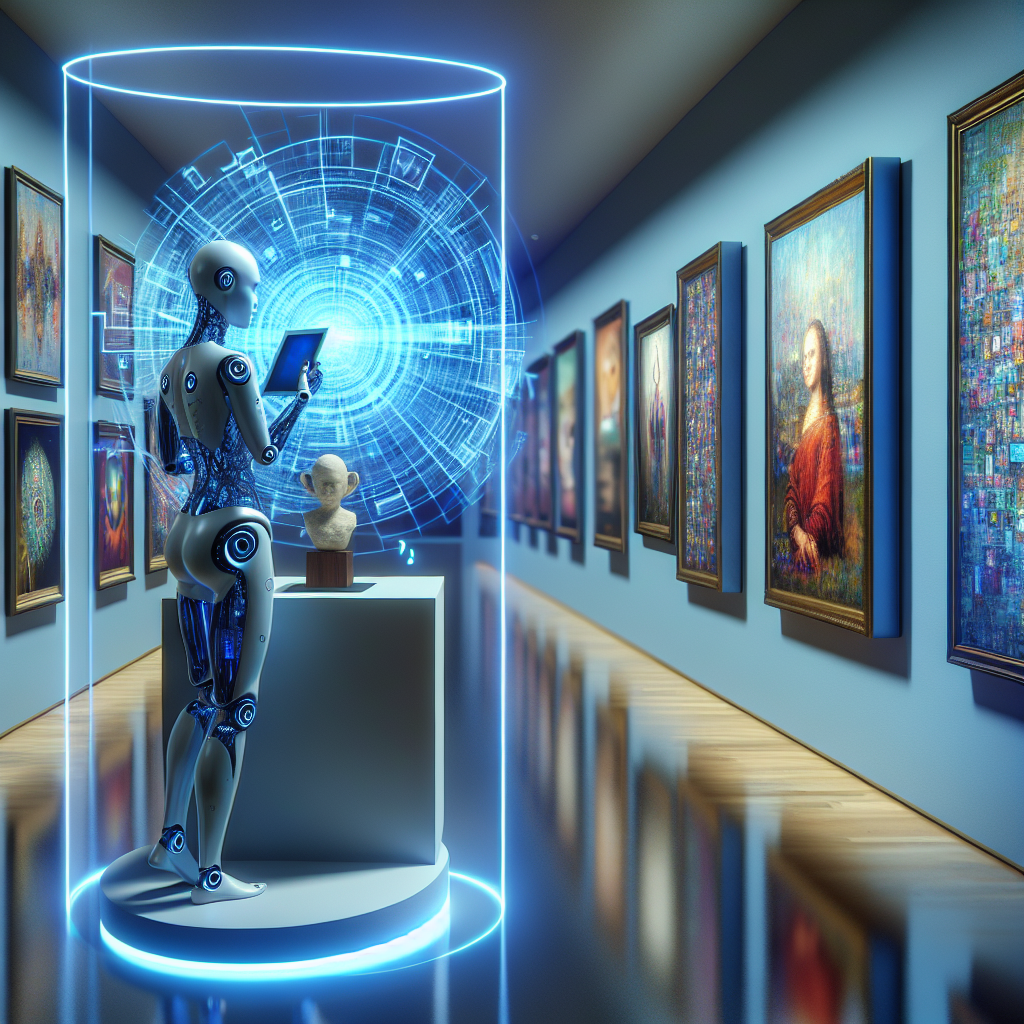In recent years, the world of virtual art galleries has seen a significant shift towards incorporating generative AI technology into the creative process. This innovative approach has opened up new possibilities for artists, curators, and art enthusiasts alike, allowing for the creation of unique and dynamic artworks that push the boundaries of traditional artistic expression. In this article, we will explore the role of generative AI in virtual art galleries, examining how this technology is changing the way we experience and interact with art.
Generative AI, also known as generative adversarial networks (GANs), is a type of artificial intelligence that is capable of generating new images, music, text, or other forms of creative content. By using algorithms that learn from a dataset of existing artworks, generative AI can create original pieces that mimic the style and characteristics of the input data. This technology has been used in a variety of fields, from creating deepfake videos to generating realistic images of non-existent people. In the world of art, generative AI is being used to produce innovative and thought-provoking works that challenge our perceptions of what art can be.
One of the key benefits of using generative AI in virtual art galleries is the ability to create artworks that are constantly evolving and changing. Unlike traditional static artworks, which remain the same over time, generative AI artworks can adapt and respond to their environment, creating a dynamic and interactive experience for viewers. This can be particularly powerful in virtual art galleries, where visitors can explore digital spaces and interact with artworks in new and exciting ways.
Another advantage of generative AI in virtual art galleries is the ability to democratize the art-making process. By using algorithms to generate artworks, artists can explore new creative possibilities and experiment with different styles and techniques without the need for traditional artistic skills. This can open up opportunities for a wider range of artists to participate in the creation of virtual art galleries, leading to a more diverse and inclusive artistic community.
Generative AI can also help to address some of the challenges facing traditional art galleries, such as limited physical space and high costs associated with creating and maintaining exhibitions. By hosting virtual art galleries online, artists and curators can reach a global audience and showcase their work to a wider range of viewers. This can help to increase the visibility and accessibility of art, making it more accessible to people who may not have the opportunity to visit a physical gallery in person.
In addition to its creative potential, generative AI can also raise important questions about the nature of art and the role of the artist in the creative process. Some critics argue that using algorithms to generate artworks diminishes the role of the artist as a creator, suggesting that the true essence of art lies in the human experience of making and appreciating art. Others see generative AI as a tool that can enhance and expand the creative possibilities of artists, enabling them to explore new ideas and push the boundaries of artistic expression.
Ultimately, the role of generative AI in virtual art galleries is still evolving, with artists and curators experimenting with different ways to incorporate this technology into their creative practices. As generative AI continues to advance and become more sophisticated, we can expect to see even more innovative and exciting artworks emerging in virtual art galleries around the world.
FAQs:
Q: How does generative AI work in virtual art galleries?
A: Generative AI uses algorithms to generate new artworks based on a dataset of existing images. These algorithms learn from the input data to create original pieces that mimic the style and characteristics of the dataset.
Q: What are some examples of generative AI artworks in virtual art galleries?
A: Some examples of generative AI artworks include digital paintings, interactive installations, and virtual reality experiences that are created using algorithms to generate dynamic and evolving artworks.
Q: What are the benefits of using generative AI in virtual art galleries?
A: Using generative AI in virtual art galleries allows for the creation of dynamic and interactive artworks that can adapt and respond to their environment. It also democratizes the art-making process and helps to address challenges facing traditional art galleries.
Q: What are some of the challenges of using generative AI in virtual art galleries?
A: Some challenges of using generative AI in virtual art galleries include questions about the role of the artist in the creative process and concerns about the impact of algorithms on artistic expression. Additionally, there may be technical limitations and ethical considerations to consider when using generative AI in art.
Q: How can artists and curators incorporate generative AI into their creative practices?
A: Artists and curators can incorporate generative AI into their creative practices by experimenting with different algorithms and techniques to generate new artworks. They can also collaborate with technologists and developers to explore the creative potential of generative AI in virtual art galleries.

